#Earl of Salisbury
Explore tagged Tumblr posts
Text

I was trying to redraw a scene from Elizabeth I (2005) but I think I went overboard
#art#digital art#artists on tumblr#my art#Elizabethan Era#Elizabeth i#Francis Walsingham#William Cecil#Lord Burghley#Robert Cecil#Earl of Salisbury#digital painting#digital illustration#fanart
39 notes
·
View notes
Text
She did keep her good old house, defeating the Earl of Salisbury, who abandoned the five-month siege and retreated.
"Normal Women: 900 Years of Making History" - Philippa Gregory
#book quote#normal women#philippa gregory#nonfiction#agnes randolph#countess of dunbar and march#14th century#defeat#william montagu#earl of salisbury#siege#retreat
0 notes
Text
The Palladian Bridge, Wilton House, Wiltshire
The Palladian Bridge at Wilton House, in Wiltshire, was built in 1736-37 for Henry Herbert, the 9th Earl of Pembroke. The design was his own, and such was his passion for building that he became known as the ‘Architect Earl’. The bridge crosses the River Nadder which forms the boundary between the formal gardens and informal landscape. Continue reading The Palladian Bridge, Wilton House, Wiltshire
#Cecil Beaton#Earl of Pembroke#Edith Olivier#John Singer Sargent#Keith Piper#Ottoline Morrell#Palladian Bridge#Philip Sassoon#Port Lympne#Rex Whistler#Roger Morris#Salisbury Museum#Sir John Lavery#Stephen Tennant#Tate Gallery#Wilton House
0 notes
Text
Book and Writing Update

View On WordPress
#Anne Boleyn#Catherine Howard#Countess of Salisbury#Duke of Buckingha#Duke of Norfolk#Duke of Northumberland#Duke of Somerset#Earl of Essex#Earl of Surrey#Earl of Warwick#Edward Plantagenet#Edward Seymour#Edward Stafford#elizabethan rebellions#George Boleyn#helene harrison#Henry Howard#Jane Boleyn#Jane Grey#Jane Parker#John Dudley#Katherine Howard#Lady Jane Grey#Lady Rochford#Margaret Pole#owen emmerson#Pen and Sword#Robert Devereux#Thomas Howard#Thomas Seymour
0 notes
Text
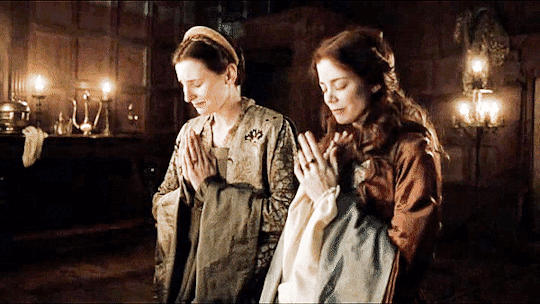
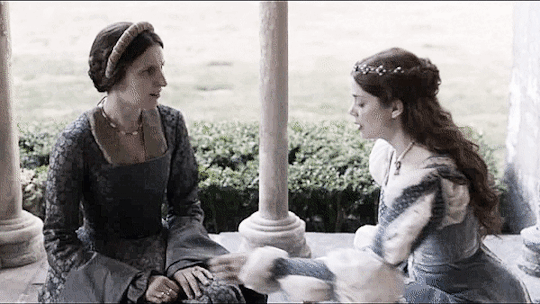
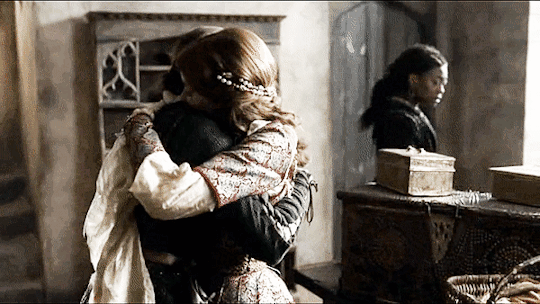
Katherine of Aragon & Margaret Plantagenet
They had known each other since Katherine first came to England. Margaret’s late husband, Richard Pole, had been Prince Arthur’s Lord Chamberlain, and she had accompanied him to Wales during the brief five-month marriage of Katherine and her first husband. Royal by birth, Margaret Pole was one of the most important ladies of high rank in the kingdom and one of the last Plantagenets at the Tudor court.
There a bond seems to have been forged between the two women, despite the fact that Katherine spoke little English and was 12 years younger than Margaret. The Spanish princess soon learned that her father had demanded the execution of Margaret’s brother before she arrived in England, and she was horrified. Feelings of guilt over the Earl of Warwick’s unjust execution pushed Katherine to seek Margaret’s friendship. Many years later, Margaret’s son, Reginald Pole, recorded that Katherine was “very much bound to recompense and requite us [the Pole family] for the detriment we had received on her account (although she was not in the least to blame for it), and to show us every kindness, having found by experience that in all her sorrows and afflictions, from no family of the realm had she ever received greater consolation than from ours, although for her sake we had received so many injuries”
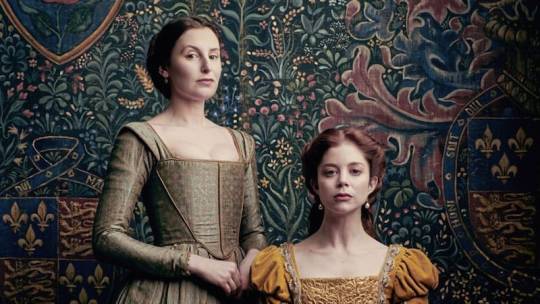
Arthur’s premature death at Ludlow parted them, but they continued to correspond until Henry VIII’s accession rescued Katherine from penurious widowhood and made her the queen consort she had always expected to be. Margaret had also known financial distress during this period (her husband died in 1504), but her loyalty and friendship were not forgotten. She came to court with her eldest son to attend Katherine’s coronation and was soon appointed one of the queen’s chief attendants. In 1512, possibly at his wife’s behest, Henry VIII granted Margaret’s petition for restoration of the earldom of Salisbury and she became a countess in her own right.
Katherine chose Margaret to be the governess of her daughter, Princess Mary. Margaret had formed a close bond with Katherine and treated her daughter with the same warmth. Katherine would gladly have seen a marriage between her daughter and her friend’s son Reginald. The Pole family fortunes crashed after Anne Boleyn became the second wife of Henry VIII. Not surprisingly, Margaret had sided with Katherine and Mary during the divorce struggle. Lady Salisbury was known for her devout Roman Catholic beliefs. When Princess Mary was declared a bastard in 1533, Margaret refused to give Mary's gold plate and jewels back to Henry VIII. When Mary's household was broken up at the end of the year, the sixty-year-old Margaret Pole asked to serve Mary at her own cost, but was not permitted. Five years after the death of Katherine of Aragon, Lady Salisbury was executed on the scaffold. Her death is one of the most tragic events in Henry VIII's reign.
Sources:
Linda Porter, Mary Tudor:The First Queen Sylvia Barbara Soberton, Great Ladies: The Forgotten Witnesses to the Lives of Tudor Queens
#catherine of aragon#katherine of aragon#catalina de aragon#margaret pole#margaret plantagenet#the spanish princess#charlotte hope#mary i of england#mary tudor#arthur tudor#henry viii#anne boleyn
111 notes
·
View notes
Text

TUDORWEEK2024 - DAY FIVE: Your Favourite Tudor Iconography
The Hours of Elizabeth The Queen
The Hours of Elizabeth the Queen has been described as the most lavish Book of Hours produced in fifteenth-century England. The text itself contains three sequences of Hours: the Hours of the Virgin and also the Hours of the Cross and of the Passion together with a number of other devotional texts. The illustration is particularly lavish. In addition to the full-page images before important textual divisions the book includes an astonishing 423 painted initials with narrative or decorative scenes. The manuscript is known as the Hours of the Queen because of an inscription at the bottom of the pictured miniature of the Crucifixion: ‘Elisabeth the quene’. This appears to be a signature of Elizabeth of York (d. 1503), daughter of Edward IV (1461-83) and wife of Henry VII (1485-1509). However, the manuscript was not originally made for her. Later in the volume (f. 152) is a prayer for the soul of Cecily or Cicely (d. 1450), Duchess of Warwick, and it is likely that the book was made for a member of her family, possibly her father, the powerful Richard Neville (b. 1400, d. 1460), 5th Earl of Salisbury, the nephew of Henry IV (1399-1413). Thus this magnificent book was deemed important enough to have been passed to important members of English aristocracy, in this case, ultimately the daughter, wife, and mother of successive kings of England.
#tudorweek2024#elizabeth of york#medieval manuscripts#book of hours#tudor history#primary sources#tudorerasource#15th century#medieval history
25 notes
·
View notes
Text
Court Circular | 17th July 2024
St James’s Palace
The Princess Royal, Colonel-in-Chief, Intelligence Corps, this afternoon visited 4 Military Intelligence Battalion at Bulford Barracks, Salisbury, Wiltshire.
Her Royal Highness was represented by Mrs Charles Ritchie (Lady in Waiting to Her Royal Highness) at the Funeral of the Earl of Rosebery and Midlothian which was held at Dalmeny Kirk, Main Street, Dalmeny, Midlothian, this afternoon.
30 notes
·
View notes
Text


31st July 1423 saw the Battle of Cravant.
Around 4,500 French and Scots soldiers, commanded by John Stewart, Earl of Buchan and Seigneur of Aubigny fell in defence of the town against the English commanded by Thomas Montacute, 4th Earl of Salisbury
Both sides had learned their lessons from previous battles and were drawn up opposed along the banks of the small river Yonne, no flashy cavalry charges, knights were to fight in close orders and dismounted, both sides had their archers and crossbowmen and artillery, both had reasonable defensive positions, the Dauphinists just had twice the numbers of the Anglo-Burgundians. However, a Burgundian artillery and English archery barrage brought the French centre into disorder
Salisbury ordered a quite unEnglish massive charge across the river and turned the enemy’s disorder into a rout, while a charge of Robert Willoughby’s men across a small bridge separated the French from the Scots.
The Scots tried to make a stand and refused to back down as as the French began to withdraw, when the rest of the Dauphinists fled they were overwhelmed and slaughtered, almost to a man. The Anglo-Burgundians had won the day against the odds.
Buchan was lucky to be taken alive, Henry V of England had re-asserted the English claim of suzerainty over Scotland, and therefore executed Scots prisoners of war on the grounds that they were traitors, fighting against their own King.
After the battle Buchan was exchanged, and after his release in 1424 he was appointed Constable of France making him the effective Commander-in-Chief of the French army. To recover from the losses sustained at Cravant, fresh troops under the Earl of Douglas were dispatched from Scotland to France.
Buchan was killed a year later at the Battle of Verneuil, along with most of the Scottish troops in France, when abandoned by their French allies and almost completely surrounded, the Scots made a ferocious last stand, but were overwhelmed.
15 notes
·
View notes
Note
Tell me everything about Joan if Kent, specifically which historians I should hiss at.
Oh man, Joan of Kent is awesome. It's hard to describe her life quickly because she had such a long and varied one. It spans from the end of Edward II's reign and the upheavals of Edward III's minority throughout the glory years of Edward III's reign to the decline in his latter years to the Peasants Revolt and the fragile beginnings of Richard II's reign. She can assume a number of different shapes: romantic heroine, powerful and influential woman, fashion icon, mediator, literary patron, scandal, survivor. She makes a status-defying match, ostensibly for love, and then follows it up by marrying the heir to the throne of England, again ostensibly for love.
Of course, it was the Middle Ages so a lot of medieval chroniclers and commentators saw her as the stereotypical wanton, transgressive woman.
Her story:
Joan was the daughter of Edmund, Earl of Kent (Edward I's youngest son) and Margaret Wake, and was thus Edward I's granddaughter, Edward II's niece and Edward III's first cousin. She was born before or on 29 September 1326-1328 (the exact year is debatable). Her father was executed in 1330 in highly controversial circumstances for attempting to free the deposed and likely dead Edward II.* Joan is generally believed to have become a ward of Philippa of Hainault as a small recompense for Kent's execution (Edward III and Philippa are believed to have played no role in Kent's execution). In the winter of 1340-41, Joan was married to William Montagu, the son and heir of the Earl of Salisbury. This was an entirely conventional match: he was of similar age and status to herself, the marriage ensured she would become Countess of Salisbury upon his father's death. But about seven years later, there was a scandal: a knight, Thomas Holland, claimed that Joan had married him clandestinely and that they had consummated it before she married Montagu. He appealed to the papal authorities to return her to him.
A long, protracted dispute followed. Montagu appears to have kept Joan imprisoned in strict seclusion so she could not respond or appoint an attorney to respond on her behalf to the papal investigation. Eventually, she was able to do so and evidently supported Holland's claim: the investigation found in Holland's favour. Her marriage to Montagu was annulled and she and Holland were have their marriage solemnised publicly.
Because of the scandal and the struggle to have the marriage recognised, as well as the unusualness of the match itself, Joan and Holland's relationship has typically been seen as a romance for the ages. But Joan was, at most, 13 years old (and possibly even as young as eleven) and Holland, born c. 1315, was around 25 years old, i.e. close to, if not actually, double her age, when they married clandestinely. At around 12 years old, she was considered to be "marriageable age" and a medieval 12 year old was likely considered more mature than a modern girl of the same age. But she was, still, you know, a 12 year old girl marrying a 25 year old man. That it has been hailed as a great romance is not really surprising given the stereotypical view of the Middle Ages as a time when dirty old men married preteen girls and raped them and the fact that until very recently Lolita was published with a blurb calling it the "only convincing love story" of the 20th century.
There are a number of legends attached to Joan from around this time. Two stories refer to a Countess of Salisbury and Joan held the title for the last four years of her Montagu marriage, though her then-mother-in-law, Katherine Grandison, also held the title as the dowager. The first story records that Edward III raped the Countess of Salisbury - the details of the story make it clear that Katherine, not Joan, is who was meant, though that has not stopped some with connecting the story to Joan specifically. The story itself is unverifiable - the earliest, i.e. contemporary, recording of the story contains both factually correct and factually incorrect details, and it is French in origin, which might mean it was propaganda designed to smear Edward III (this does not prevent it from being true, however). Some have suggested that the story has been confused. We certainly have no way of proving or disproving it beyond a doubt, but the idea it was meant to refer to Joan are very slim.
A second, much lighter story involves the foundation of the Order of the Garter. In it, the Countess of Salisbury is dancing when a garter slipped from legs, producing amusement. Edward picked up the garter and returned it, admonishing, "Honi soit qui mal y pense!" ('Shame on him who thinks ill of it!'), which then became the order's motto. This tale has also been heavily doubted and whether it was Joan or Katherine who is meant is debated. In both stories, Joan is often the more prominent candidate but that likely reflects how b*etter known she is and how these stories "fit" with her reputation as a beautiful, sexually desirable woman.
From 1350 to 1361, Joan gave birth to five children: Thomas, John, Joan, Maud and Edmund (who died in infancy). In 1352, Joan's only surviving sibling**, John, died childless and she inherited the earldom of Kent. This led to a massive step up in status and wealth for her new family. Holland died on 28 December 1360 from illness.
By spring 1361, Joan had another husband in line: Edward of Woodstock. Edward was the eldest son and heir of Edward III, Prince of Wales, war hero, chivalric icon and known famously, if anachronistically, as "the Black Prince". Joan was not the obvious choice for the Prince's wife - a conventional choice would be a royal or noble woman from the European continent (there had been a number of failed marriage negotiations for this type of marriage for the Prince), and had the Prince outlive his father, Joan would have been the first English-born queen since the Conquest. She was also the first Princess of Wales since Wales was incorporated into the English crown. It's frequently asserted that the Prince had long-loved Joan and he does appear to have referred affectionately to her, but we don't really know what Joan felt about the Prince or her marriage.
As a result of the Treaty of Bretigny, the Prince was to rule Aquitaine on Edward III's behalf. Joan and her Holland children accompanied him when he sailed to Aquitaine the following year. We don't know a lot about Joan in Aquitaine. We know her fashion sense drew fairly predictable criticism and that she gave birth to two sons while there. The first, named Edward, died in Aquitaine in 1370, aged 5 years old and the second would become Richard II. The Prince was much-criticised for his arrogance and ostentatious style in ruling Aquitaine and it's possible Joan was a part of that. A lot of work has gone reassessing his rule, however, and found it was not necessarily as bad as has been assumed.
After 1367, the Prince became seriously ill and the war with France was set to reignite. Incapable of carrying out his duties in Aquitaine effectively, Edward, Joan and their family returned to England in 1371, where his health declined further. Joan often acted in his stead during this period, and when he died in 1376, she was made guardian of their son, Richard, who was now the ailing Edward III's heir and became king himself in 1377, aged only 10.
Joan remained a infinitely influential and powerful woman in the coming years, with some historians describing her as a "quasi-queen". A large portion of pardons and grants were made at her request, and as Countess of Kent and the dowager Princess of Wales, she had large estates of her own to administer. She also enjoyed a great reputation as an mediator: she mended the quarrel between John of Gaunt, Henry Percy and the city of London and mediated between Gaunt and Richard. Interestingly, her entourage included leading members of the Lollard movement, suggesting she may have been interested in reform of the church. This was also time of Geoffrey Chaucer and literary scholars has been suggested Joan served as inspiration for a various number of figures in Chaucer's work.
During the Peasants Revolt of 1381, she was harassed en-route to London and the rebels asked for her to kiss them. Chroniclers also recorded her state of terror when the Tower of London was broken into, though it may have been more of a rhetorical device on behalf of chroniclers to show what they saw were the horrors of the rebels' behaviour.
Joan appears to have taken a step back from court. Possibly, she was increasingly incapacitated by illness (it's been suggested Joan suffered from dropsy/edema; the chronicler Thomas Walsingham claimed she was so fat she could barely move, though no other chronicle made this claim), or possibly she retired once Anne of Bohemia married Richard II so not to overshadow the new queen. Despite illness and retirement, Joan attempted to mediate between Richard and another of her sons, John Holland, when the latter murdered Ralph Stafford and Richard had determined to execute him. One chronicler claimed Richard's refusal to hear her pleas caused her to die of grief. The stress of the situation could hardly have helped if she was suffering an illness. She died 7 August 1385 and was buried in the same church as her first husband, Thomas Holland. This has generally been taken as evidence that she loved him best but the situation may have been more complicated. The plans for the Prince's burial changed dramatically, which may have led Joan choosing to be buried elsewhere or she may have made her choice to as a gesture of affection for her less royal family. Richard did pardon John after Joan's death and they were reconciled, so one might say that even in death she was a successful mediator.
In terms of her descendents, Richard died childless but most of her Holland children had issue. She had descendents on both sides of the Wars of the Roses.
*If you're unfamiliar with the reigns of Edward II and Edward III, the short summary is that Edward II ended up basically alienating everyone through his relationship with and preferential treatment of Hugh Despenser the Younger (quite possibly his lover). The queen, Isabella of France, eventually allied with Roger Mortimer, Earl of March and spearheaded a rebellion that led to Edward's deposition and the execution of Despenser. His son, Edward III, became king but as he was a minor, Isabella and Mortimer effectively ruled in his reign. Edward II was said to have been murdered on 21 September 1327 and most historians accept this. However, there are some references to Edward II surviving well past this, including the plot to free him that Edmund was involved with, and there is a coterie of historians who believe it, namely headed by Ian Mortimer and Kathryn Warner. Given Edmund's royal blood, his execution was deeply unpopular - no one could be found willing to execute him until a criminal was given a pardon in exchange. Edward III is said to have wanted to pardon Edmund but was blocked by Isabella and Mortimer by doing so. When Edward III took control of government and ousted Mortimer, he posthumously pardoned Edmund and executed Roger Mortimer. One of the charges against Mortimer was that he'd duped Edmund into believing Edward II was still alive.
** Joan had two or three siblings. Her brothers were Edmund, the eldest boy who was born had died before 5 October 1331 and John, who was born posthumously on 7 April 1330, inherited the earldom as an infant and died childless on 26 December 1352. A sister, Margaret, is sometimes identified but she seems to be attested only from an authorisation to negotiate a marriage - Penny Lawne has argued that it was more likely that Joan was the intended bride but the clerk writing out the authorisation confused her name with her mother's (Margaret). There does not seem to be any other evidence of her existence - she is not mentioned as attending the baptism of John, though her other siblings are, and she is not mentioned in the Inquisition Post Mortems for John where Joan is named as his only heir. If Margaret had existed, she must have died sometime before John's death. Her death is sometimes given as 1352 but I'm not sure what the source for this is..
Historians To Hiss At.
As you might guess, Joan's life suggests a sexual impropriety and scandal, or in a slightly less misogynist sense, a life dominated by romance. She was a bigamist. She was married for love. She married three times and only one of them to a man appropriate to her status. She's both Lady Chatterley, driven by lust into the arms of a man of lesser status, and the relentless, cold-hard social climber like Philippa Gregory's Anne Boleyn.
So of course historians through the centuries have replicated that bias. For some, like Anthony Goodman, she's a giddy romantic who follows her heart who never manages to mature. For some, she's a romantic heroine, her and Thomas Holland are the epic romance of the Middle Ages which, uh, doesn't really take into consideration Joan's youth at their marriage. For others, she's a saucy wench, hooker with a heart of gold - I've seen someone point out how young Joan was when she married Holland on Twitter and gotten the response of "well she was saucy ;)". For others still, she's just a slut and a selfish, slippery, scheming one at that. After all, all those good men wouldn't have been falling themselves over her without her seducing them, would they? Anyway, it's a Russian Roulette whenever you pick something up about Joan. Will it romanticise a guy having sex with a 12 year old? Will it call the 12 year old a giddy romantic? Will it slut-shame the 12 year old? I've only found one thing - Samantha Katz Seal's review of Anthony Goodman's biography of Joan - that actually suggested Joan was a victim of abuse without immediately offering a theory to work around it.
Two examples:
The peach that is renowned Ricardian crank and misogynist John Ashdown-Hill wrote that "the girl's [Joan was in her 30s) reputation left a good deal to be desired … she was deficient in some respects and rather too-well endowed in others".
Ian Mortimer's biography of Henry IV makes overly frequent comparisons between Henry and Richard II, who Henry deposed and had murdered, basically to the tune of "Henry was better than Richard! Henry had the biggest penis!" One repeated comparison is their mothers, where Mortimer describes Joan's legacy as "burdensome" for Richard and cast a shadow over his legitimacy, while "Henry’s mother, in contrast, was popularly regarded as one of the most lovely adornments of the English court". One's a burden, the other's a beautiful object.
But the historian that really gets my hackles up is Kathryn Warner, probably I once thought really very highly of her. She talked a lot about going back to the original sources instead of repeating what other historians have said, not speculating without supporting evidence, and having progressive values. Notably, she called out the homophobia and misogyny that hung around depictions and discussions of Edward II and Isabella of France. She was originated (I think?) or at least got heavily involved with the Don't Defame The Dead movement with history bloggers and the histfic community on Goodreads.
Warner follows Mortimer's example, talking about how "embarrassing" Joan was for Richard II unlike the Saintly Dead Paragon Of Medieval Feminine Virtue That Was Blanche of Lancaster. She even deepens that comparison when talking about Joan being sexually harassed during the Peasants Revolt:
even the rebels in 1381 demanding kisses from her, though it may indicate that they liked her and found her considerably more approachable than other members of the royal family and the nobility, does not imply deference for a royal person and the king’s mother. It is difficult to imagine anyone demanding a kiss from Joan’s predecessors Philippa of Hainault or Isabella of France, or from Henry of Lancaster’s mother Duchess Blanche.
So... we're victim blaming Joan for being sexually harassed. After all, as Warner loves to point out (repeatedly) Joan did have a "habit of dressing in the style of a freebooter’s mistress" that "did Joan’s reputation no good whatsoever". In her Philippa of Hainault biography, Warner seems to imply that Joan's style of dress was the sole complaint about the Black Prince's conduct in Aquitaine.
Edward and Joan of Kent lived in magnificent, extravagant splendour, and not everyone approved: one observer stated that the princess of Wales and Aquitaine wore great furred gowns and low-cut bodices in the style usually worn by the mistresses of freebooters: ‘I am disgusted by those women who follow such a bad example, particularly the Princess of Wales.’ Even so, not a word of condemnation came from Edward’s parents the king and queen.
There are many, many complaints about the Prince's actual conduct but Warner chooses to single out Joan's fashion sense and implies that it was worthy of condemnation from Edward III and Philippa of Hainault. Given Philippa herself was an assiduous follower of fashion and it seems doubtful that she'd think Joan following the new fashion style was worthy of complaint.
Actually, it would be very reasonable to interrogate this. Richard Barber points out this is the "French view" of English fashion and it may well be that there was underlying xenophobia in the sentiment. Additionally or instead, we could read it as another entry in the age-old misogynistic tradition of men complaining about women's fashion. In short: we should not be replicating the biases of the Middle Ages as an excuse to talk about how embarrassing or condemnatory Joan's behaviour was.
But what was, you may be asking, a freebooter's mistress? A freebooter was a effectively a pirate so Warner is effectively saying that Joan dressed like a pirate's whore.
In discussing Joan's marriage, she gives Joan's age as "only thirteen or fourteen" before correcting herself to "at most thirteen and a half" and then notes Holland was in his mid-20s. Warner then says:
Evidently, though, she found him extremely appealing, and they married clandestinely and consummated the marriage, or so they later claimed.
I feel like if a man writing in the 1970s can recognise that Joan may have been coerced in marrying Holland, as Karl P. Wentersdorf did, saying Joan may have "been placed under pressure by her suitor and had not given her full and free assent", Warner can do much, much better than "clearly 13 year old Joan of Kent found him soooooo hot". We have no idea how they married or how Joan felt about her marriage as it happened. Of course it's possible that Joan found him hot - kids have crushes on adults all the time, though they don't really want to have sex with their crush except in the theoretical sense. But maybe Joan didn't, maybe Joan was pressured, as Wentersdorf suggested in 1979, or maybe she was groomed and believed she did. But I think it is just... a really irresponsible, victim-blaming line to take in relation to a 25 year old marrying a 13 year old (if Joan was as old as 13).
While Warner does recognise the creepiness of the relationship between Holland and Joan, she discusses it like so:
Thomas Holland was twice her age, a gap which makes their supposed love-match seem less romantic and more creepy and abusive to modern sensibilities (though contemporary opinion would have held an earl’s daughter and king’s granddaughter marrying a man so far beneath her in rank as a far worse misdemeanour.
I'm so glad she threw in the reference to how Joan, contemporarily speaking, was the worse offender in the relationship. We have no idea how people who actually knew her understood the relationship, it's possible they were horrified on her behalf. We only know what chroniclers - writing when Joan was an adult - made of it and chroniclers were frequently full of misogyny. As Warner has pointed out herself, they were the gossip magazines of their day.
Warner suggests that rather than using the money Holland had gained for fighting in the Crecy campaign to finance the very expensive process of appealing to the papal authorities, he felt that finally, with all this money, he could keep Joan "in the style to which she was accustomed", making her sound like a spoilt brat who'd been like "eww poor person" at Holland. Montagu, in Warner's telling "supposedly kept her prisoner". That neither Joan nor an attorney on her behalf responded a summons and that Pope Clement VI dispatched a brief to the Archbishop of Canterbury and other prelates enjoining them to ensure Joan could appoint her own attorney suggests that Montagu was preventing Joan from responding in some way.
This is all a prelude to the theory Warner believes in which is that Joan and Holland made up the story of their earlier marriage because they met while Holland was working as Montagu's steward and fell in "love or lust" and wanted to marry. So, in that regard, Joan isn't a victim of what today we would call child sexual abuse but actually an adulteress who lied to the papal authorities because she wanted to be Mrs Thomas Holland.
Only problem is that there is absolutely no evidence of this and quite a lof of reasons why it doesn't make sense. This post is long enough already so I'll write them up in a separate post. We can't even say that Holland was Montagu's steward because the only evidence of this is in John Hardying's chronicle, written during the Wars of the Roses - over a century on from events.
Some of this might sound like nitpicking or disagreements on historical record, and maybe it is. But Warner does have a Facebook post where she complains about Joan's "fans" who depict her as "amazingly special and unique and far more important than anyone else" (where are all these fans, I wonder). In the comments, she indicates her reasoning for the theory Joan and Holland lied which basically boils down to:
it's sickening that the story is treated as a great love story when it's not love and "just disgusting"
Not speaking up about his marriage makes Holland look like a coward, which he wasn't and it makes Holland look like an abusive groomer which she sincerely hopes he wasn't
she "prefers" the version where Joan wasn't groomed and raped and it's empowering to imagine her choosing Holland
Joan's fans are annoying
To which I would say:
It is sickening! But also: how people have interpreted and represented the relationship has nothing do with the reality of it.
It's not "brave" for a grown man to admit to having sex with a 12/13 year old. And he did very much admit to having sex with a 12/13 year old Joan - eventually. Being brave in battle does not make a man more or less likely to be an abuser. Finally, wishing and hoping does not make history.
It is a historian's job to interpret the evidence, not ignore it for a fantasy scenario in which they can feel good about what happened. It is also not really empowering or feminist to erase Joan's abuse.
How do people living almost 650 years on from Joan have any impact on Joan's lived reality? Girlbossed historical women is an annoying phenomena but it has nothing to do with the real Joan or her life.
#joan of kent#asks#poppaeasabina#text posts#maybe we need to add slutshaming and abuse apologism to the list of things#we as modern historians and commentators should do better than the medievals
25 notes
·
View notes
Text
AGNES OF DUNBAR // COUNTESS OF DUNBAR & MARCH
“Known as Black Agnes for her dark complexion, she was the wife of Patrick, 9th Earl of Dunbar and March. Agnes became renowned for her heroic defence of Dunbar Castle in East Lothian against an English siege led by William Montagu, 1st Earl of Salisbury, which began on 13 January 1338 and ended on 10 June the same year during the Second War of Scottish Independence from 1331 to 1357. She is buried in the vault near Mordington House.”


11 notes
·
View notes
Text
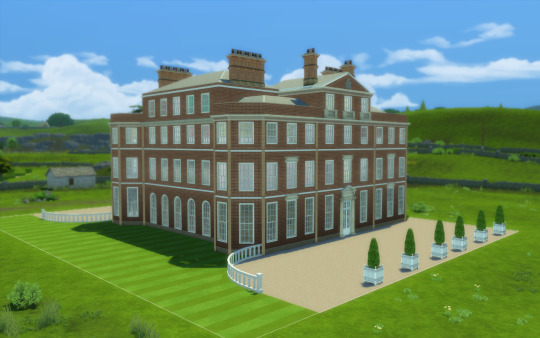



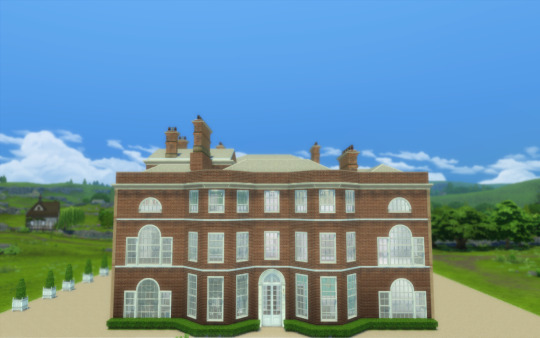


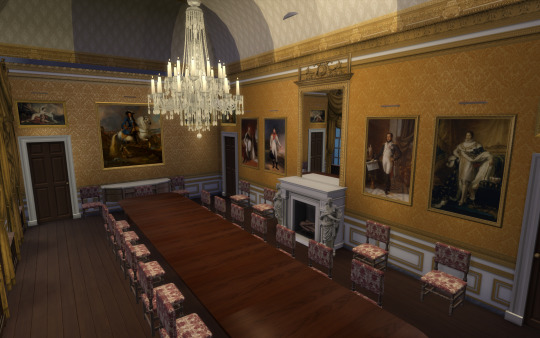




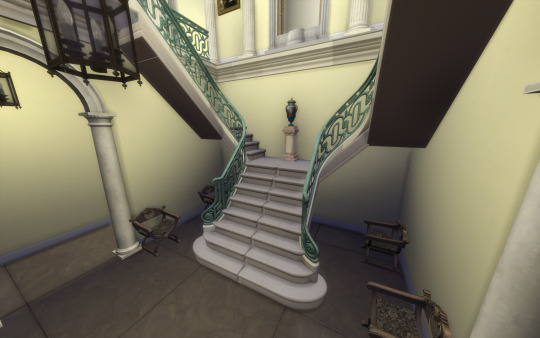
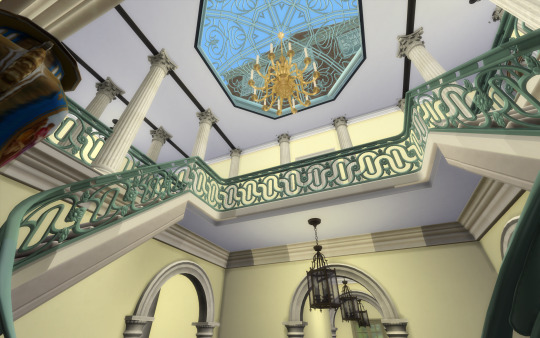







Brocket Hall
Nueva
Hace un instante
Hi guys!!
I'm sharing Brocket Hall. This is the 22nd building for my English Collection!
I decorated some of the house ground floor, for reference.
History of the house:
Brocket Hall is a neo-classical country house set in a large park at the western side of the urban area of Welwyn Garden City in Hertfordshire, England.
On the parkland site were two predecessors: the first of these was built in 1239 as Watership or Durantshide Manor, and was early held variously of Hatfield Manor and the Bishop of Ely. A second predecesor was built about 1430: whereas in 1413 John Mortimer had held Waterships, it is known that in 1477 Thomas Brockett held both manors. The house was acquired by John Brocket in the early 1550s, and passed to his son Sir John Brocket (captain of the personal guard of Queen Elizabeth) on his death in 1558.
The building and park owe much of their appearance today to Sir Matthew Lamb, 1st Baronet, who purchased the estate in 1746 and commissioned Brocket Hall to the designs of the architect Sir James Paine in around 1760.
The next owner was William Lamb, 2nd Viscount Melbourne, who was Queen Victoria's first Prime Minister (1835–41). She often visited during this period. His wife, Lady Caroline Lamb, infamously had an affair with Lord Byron, causing Lord Melbourne much embarrassment. For one of his birthdays she held a state banquet in the Saloon, at which she had herself served from a large silver dish, naked.
On Lamb's death, the house passed to his sister Emily, whose second husband was another Prime Minister, Lord Palmerston. Palmerson died at Brocket Hall in 1865, the last UK prime minister to die in office.
On Emily's death, the hall then passed to Emily's grandson by her first marriage, Francis Cowper, 7th Earl Cowper, though it was his younger brother, Henry (d.1887), who lived at Brocket Hall.
In 1893, George Stephen, 1st Baron Mount Stephen, President of the Bank of Montreal and the first Canadian to be elevated to the Peerage of the United Kingdom, leased Brocket Hall from the 7th Earl for the remainder of his lifetime. Over the next three years, guests included the Queen's children: The Prince and Princess of Wales, The Duke and Duchess of Connaught and the Princess Mary, Duchess of Teck. In 1897, one year after his first wife died in 1896, Lord Mount Stephen married Georgina Mary (known as Gian) Tufnell, a Lady-in-Waiting to Princess Mary Adelaide, Duchess of Teck, who encouraged the match. Gian was a lifelong friend and confidante of the Duchess's daughter, Mary of Teck, the wife of King George V, and the Mount Stephenses regularly entertained the royal couple. Gian preferred life at Brocket Hall to the social life that surrounded their London residence at Carlton House Terrace. Lady Mount Stephen was a close friend of Georgina Gascoyne-Cecil, Marchioness of Salisbury, who lived on the neighbouring estate, Hatfield House.
After the death of the 7th Earl Cowper (1905), the underlying future reversion was left to his niece, but she died only a year after him (1906) and the estate passed to her husband, Admiral Lord Walter Kerr, who lived at Melbourne Hall. When the life tenant Lord Mount Stephen died in 1921, Kerr put the estate up for sale, and in 1923 it was purchased by Sir Charles Nall-Cain, who co-ran the brewing company Walker Cain Ltd; he was created Baron Brocket in 1933. His son, Ronald Nall-Cain, 2nd Baron Brocket, was a Nazi sympathiser; he was interned during the Second World War, and his property was sequestrated and put to use as a maternity hospital.
More history: https://en.wikipedia.org/wiki/Brocket_Hall
------------------------------------------------------------------------------
House file:
Location: Hatfield, England
Material: red brick
Style: Neo-classical
Date: 1760
This house fits a 50x40 lot.
I only decorated some of the important rooms. All the rest of the house is up to your taste to decor.
Hope you like it.
You will need the usual CC I use:
all Felixandre cc
all The Jim
SYB
Anachrosims
Regal Sims
King Falcon railing
The Golden Sanctuary
Cliffou
Dndr recolors
Harrie cc
Tuds
Lili's palace cc
Please enjoy, comment if you like the house and share pictures of your game!
Follow me on IG: https://www.instagram.com/sims4palaces/
@sims4palaces
Access only for memebers (free for all)
DOWNLOAD: https://www.patreon.com/user?u=75230453
#sims 4 architecture#sims 4 build#sims4#sims 4 screenshots#sims 4 historical#sims4building#sims4play#sims4palace#sims 4 royalty#ts4#ts4 download#ts4 simblr#ts4 gameplay#ts4 screenshots#the sims4#sims 4#sims 4 aesthetic#sims4 build#sims 4 gameplay#thesims4#the sims 4
18 notes
·
View notes
Text
On This Day (25 Aug) in 1540, Katherine Grey was born at Bradgate House, Leicestershire; the second daughter of Henry Grey, 3rd Marquess of Dorset and his wife Frances Brandon.

Whilst her elder sister Lady Jane Grey was renowned for her intelligence and religious fervour, Katherine was known for her warmth and affection (in particular towards her pets), as well as her beauty. In Aug 1561, a heavily pregnant Katherine Grey was imprisoned in the Tower of London by a furious Elizabeth I after discovering her secret marriage to Edward Seymour, Earl of Hertford 9 months previously. Whilst in the Tower she gave birth to two children (who were later deemed illegitimate), following a forced annulment of her marriage, due to the belief that it was part of a conspiracy against Elizabeth, given her previous claims to the English throne.

Katherine was later released from the Tower in 1564, although remained under house arrest, having been separated from her children. Weak and depressed, and refusing to eat, Katherine died on 26 Jan 1568 aged 27yo of consumption at Cockfield Hall, Yoxford; she was initially interred in the nearby chapel, although her body was moved to Salisbury Cathedral, and buried alongside Edward Seymour beneath a great monument dedicated to the pair, following his death in 1621.
#tudor#tudor england#tudor history#lady jane grey#jane grey#katherine grey#henry grey#bradgate house#edward seymour#tower of london#salisbury cathedral#yoxford#cockfield hall#tudor people#tudor women#tudor marriage#tudor couples#tudors#tudor era
8 notes
·
View notes
Text
Rough date timeline of Henry VI part 1 because that's how my day is going so far:
ACT 1
Scene 1: Henry V's funeral, which we know happened November 7, 1422.
Scene 2: The introduction of Joan la Pucelle, which historically happened in 1428. Six years have passed.
Scene 3: Gloster gets barred from the Tower of London, and he and Winchester are so at each other that somebody calls the cops. I can't find evidence of this being a real incident.
Scenes 4-6: Seige of Orleans, 1428-29. The French artillery's aim is getting better and Salisbury is killed. The English find out about Joan la Pucelle, who is on her way to lift the seige. Talbot is said to have been recently exchanged for a French prisoner, but this does not make sense.
ACT 2
Scenes 1-3: The English attack Orleans again to avenge Salisbury. Talbot meets/is taken prisoner by the Countess of Aubergne. (He was a French prisoner from 1429-33, but this isn't how he was taken.) Presumably this is why the French are able to break the seige.
Scene 4: Rose-picking in the garden scene. Did not happen, but I would put it in the summer of 1429, making Richard Duke of York not quite 18.
Scene 5: Edmund Mortimer shows up, explains some family history, and then dies. This didn't happen but that is a separate post entirely.
ACT 3
Scene 1: Fighting breaks out in Parliament courtesy of Gloster and Winchester. Henry VI has speaking lines for the first time, implying that it is at least November 1429, and he is about 8. Gloster suggests that Henry VI be crowned in France.
Scene 2: Bedford dies of illness while the French unsuccessfully attack Rouen. This would make it 1435, except Henry VI has recently arrived in France to be crowned, so it is probably 1430.
Scene 3: The French plot revenge for Rouen and Burgundy switches sides. It is now simultaneously 1435.
Scene 4: The English are in Paris, Talbot is made Earl of Shrewsbury (1442).
ACT 4
Scene 1: Henry VI is crowned in Paris (1431). He tries to "both sides" Somerset and York while putting on a red rose badge, but he's only 10 so let's give him some slack.
Scenes 2-4: Talbot and his son are killed fighting near Bordeaux while Somerset and York argue about whether or not to send reinforcements from elsewhere in Gascony. This historically happened in 1453, when Somerset and York were back in England.
ACT 5
Scene 1: Henry VI and Gloster discuss marriage to a daughter of the earl of Armagnac, so it's about 1442. Henry thinks he's too young (21?), but sends a gift to anyway.
Scenes 2-3: York captures Joan la Pucelle. Suffolk becomes soggily besotted with Margaret d'Anjou and negotiates her marriage to Henry VI. None of this happened, but Margaret's marriage negotiations began around 1444.
Scene 4: Speedrun of Joan la Pucelle's trial, 1431. Charles agrees to be Henry's subject if the English leave, which did not happen.
Scene 5: Suffolk and Winchester successfully argue for Margaret d'Anjou as Henry VI's bride, ending the play in 1444.
#shakespeare#wars of the roses#henry vi#richard duke of york#garen what are you doing#henry vi part 1#shakespearean timelines#edmund mortimer#Margaret d'Anjou was a toddler when Joan of Arc was executed#why are they in the same scene as teenagers
5 notes
·
View notes
Text





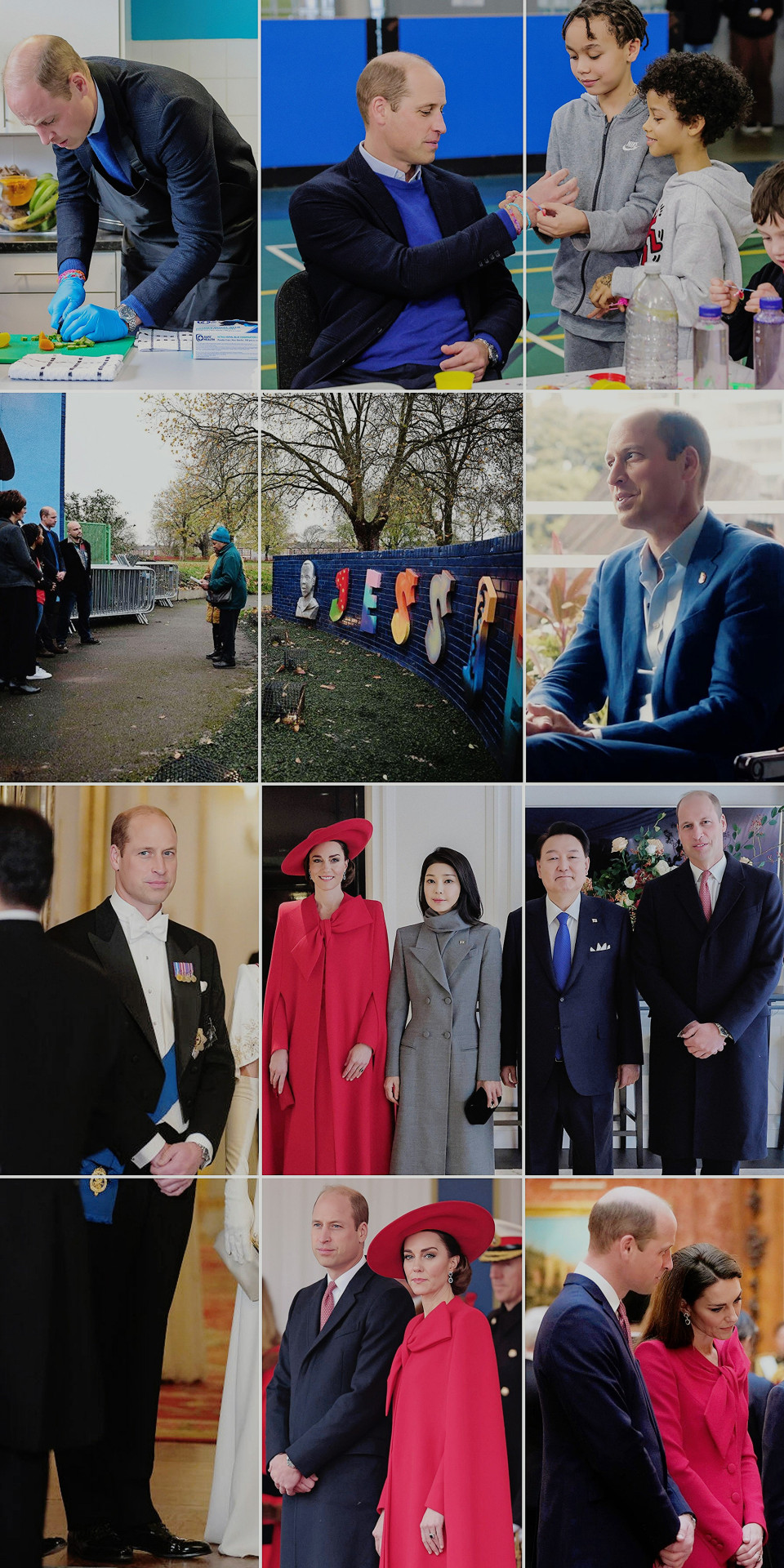

─ •✧ WILLIAM'S YEAR IN REVIEW : NOVEMBER ✧• ─
1 NOVEMBER - The Prince of Wales held an Investiture at Windsor Castle. He gave a video message at Emergency Responders Mental Health Symposium. 2 NOVEMBER - The Duke and Duchess of Rothesay visited at Burghead Primary School and Brodieshill Farm. Subsequently they visited Day1 in Inverness. 4 NOVEMBER - William departed from Heathrow Airport for Singapore. He appeared in the BBC Earthshot Prize Trailer. He appeared in a video message to support the Stand Up To Cancer Campaign. 5 NOVEMBER - William arrived at Singapore Changi Airport and was received by the British High Commissioner to the Republic of Singapore. Afterwards, he attended a Welcome to Singapore event at the Jewel and was received by the Senior Minister of State for Foreign Affairs. 6 NOVEMBER - William visited PAssion Wave @Marina Bay and joined in a Dragon Boat Race. He was received by The President of Singapore at the Istana. Subsequently, William called upon the Prime Minister of the Republic of Singapore. He attended the United for Wildlife Global Summit. 7 NOVEMBER - William held Meeting with Finalists of the 2023 Earthshot Awards. Afterwards, he attended a Founding Partners' Lunch. He attended the Earthshot Prize rehearsals. He later visited EcoLabs. He attended the Earthshot Prize Awards. Subsequently he attended an Earthshot Prize Thank You Reception. 8 NOVEMBER - William visited TreeTop Walk at Central Catchment Nature Reserve. He attended the Earthshot+ Summit. He visited Centre for Wildlife Forensics. William attended a Meeting with UK Defence Advisers at the British High Commission. He attended a Reception for the Earthshot Prize. Finally, he departed from Singapore Changi Airport for the UK. William gave appeared in an Earthshot Q&A video. 9 NOVEMBER - He arrived at Heathrow Airport. 10 NOVEMBER - William appeared in BTS Earthshot Prize Portraits. 11 NOVEMBER - Will and Cat attended the RBL Festival of Remembrance. 12 NOVEMBER - The Prince of Wales along with The Princess attended the Remembrance Day Service of Remembrance and laid a wreath at the Cenotaph. The broadcast of the 2023 Earthshot Awards, featured a video of William and Catherine snorkelling with Coral Vita. 13 NOVEMBER - William received Lieutenant General Ian Cave & Brigadier Peter Dennis (Colonel & Secretary, Mercian Regiment) at Windsor Castle. Later, he attended the Funeral of Sir Robert Charlton. 14 NOVEMBER - William and Catherine attended The King's Birthday Party. 15 NOVEMBER - The Prince of Wales was represented by Miss Helen Asprey at the Service of Thanksgiving for the late Earl of Airlie KT. 16 NOVEMBER - William visited the Hideaway Youth Project in Manchester. Later, he visited Keeping It Real at Moss Side Millennium Powerhouse. Subsequently, he visited Jessie's Wall. 17 NOVEMBER - William appeared in a 'This or That' session video for Earthshot. 21 NOVEMBER - William and Catherine welcomed The President of the Republic of Korea and Mrs Kim Keon Hee at their Hotel. They then accompanied the Presidential Couple to Horse Guards and were met by The King and Queen. Afterwards, they viewed an Exhibition of the Royal Collection items relating to the Republic of Korea. Finally, they attended the State Dinner at Buckingham Palace. 22 NOVEMBER - Will and Cat held a Reception at Windsor Castle. 23 NOVEMBER - The Prince of Wales received Her Majesty Margareta, Custodian of the Romanian Crown and Prince Radu of Romania. Later, he visited The Mercian Regiment on Salisbury Plain. 24 NOVEMBER - He received The Crown Prince of the Sultanate of Oman. 27 NOVEMBER - William held an Investiture at Buckingham Palace. Later, he attended the Tusk Conservation Awards. 28 NOVEMBER - William received Lieutenant Colonel Guy Bartle-Jones (Regimental Adjutant, Welsh Guards). Afterwards, he received submariners. He awrote a letter to Dr. Alex George. 30 NOVEMBER - William and Catherine received Crown Princess Victoria of Sweden and Prince Daniel of Sweden at Windsor Castle. Afterwards, they were we're joined by Victoria and Daniel for the Royal Variety Show.
#british royal family#british royals#royalty#royals#brf#kate middleton#catherine middleton#royal#british royalty#duchess of cambridge#review 2023#year in review : william#review november#year in review : 2023#year in review 2023 : november#william review : november#prince william#the prince of wales#prince of wales#princess of wales#princess catherine#catherine princess of wales#william prince of wales
21 notes
·
View notes
Text
In the end, politics was an accretion of personal decisions, and that means that the personality of the protagonists cannot be left out of the discussion. It determined not only how they reacted to the situations in which they found themselves, but how others reacted to them. The growing support for Edward IV in 1461 must have owed something to the realisation that he would make an effective king - whereas his father never seems to have been regarded in that light.
— Rosemary Horrox, "Personalities and Politics", The Wars of the Roses (Problems in Focus), Edited by A.J Pollard
When the worst had happened, and civil war was a reality, the overwhelming imperative was to find some way of restoring order. At the level of high politics, what this entailed in practice was a rallying around the de facto king. The Wars of the Roses, far from weakening the monarchy, actually strengthened it, since the king was the only man able to surmount faction. In spite of [Henry VI’s] manifest failings, Richard, duke of York's criticism of the regime commanded little high-level support - and would have commanded even less but for the crown's alienation of the junior branch of the Nevilles, headed by York's brother-in-law the earl of Salisbury. York in fact never did attain the political viability to break the vicious circle of temporary ascendancy and political exclusion. It was his son, Edward, earl of March, who finally mustered enough support to take the throne. He was able to do so in part because the situation had been transformed by the country's descent into open war, which reduced the compulsion to uphold the king as the embodiment of stability. Once it was no longer a matter of averting war, but of stopping it, political opinion began to divide more evenly between Henry VI and his rival. However, the crucial change may well have been York's own death at the Battle of Wakefield late in 1460. In the ensuing months Edward of York was able to present himself as the man who could mend the shattered political community. That self-identification with unity proved immensely potent, and it was not a role which could plausibly have been filled by his father. In the eyes of contemporaries, York had been the begetter of faction: a man tainted by his willingness to go to extremes.
#oof💀#I can't decide if this is more awkward or ironic#But it's nevertheless VERY interesting#Edward IV#Richard Duke of York#my post#wars of the roses#Edward still had to win Towton (ie: a military victory) to actually secure his kingship and bring over a lot of the nobility to his side#But this point is nonetheless very true - not just for his road to victory but also for the image he cultivated after he had won#It's very common to hear about how Edward IV was eventually viewed by many as a 'better' alternate to the throne than Henry VI#But what isn't acknowledged nearly as much is how by that logic he would've equally been viewed as a better alternate than his father#Ironically this entire point is made even clearer by the actions of York's own staunchest supporters ie the Nevilles#Certainly both Edward & Warwick learned their lesson from York's disastrous attempt at an acclamation in 1460#Considering how comparatively well-planned and well-executed Edward's own acclamation was in comparison#This is another reason I dislike how the Yorkists are often viewed and spoken of as a collective. the broader dynastic label tends to#minimize the differences in certain situations like this one or Richard's usurpation
25 notes
·
View notes
Text
Yorkist Birthdays 🤍
5 june - Edmund of Langley , fourth son of Edward iii.
2nd October - King Richard iii
11th June - Queen Anne nevile
28th April - King Edward iv
11th February - Elizabeth of york
2nd November - Edward v and Anne of York
17th August - Richard of Shrewsbury, duke of york
21st October - George duke of Clarence
5th September - Isabell nevile
25th February - Edward 17th earl of Warwick
14th August - Margaret countess of Salisbury and Catherine of york .
3rd May - Cecily nevile, duchess of york and Margaret of york, duchess of burgundy.
21st September - Richard 3rd duke of york
22nd November - Richard nevile , 16th earl of Warwick
3rd February - Elizabeth Woodville.
Lancastrian Birthdays ❤️
6 March - John of Gaunt
31st May - Margaret Beaufort
28 January - King Henry vii
April - King Henry iv
6 December - King Henry vi
23 March - Margaret of Anjou
16 September - King Henry V
13 October - Edward of Westminster
2 notes
·
View notes